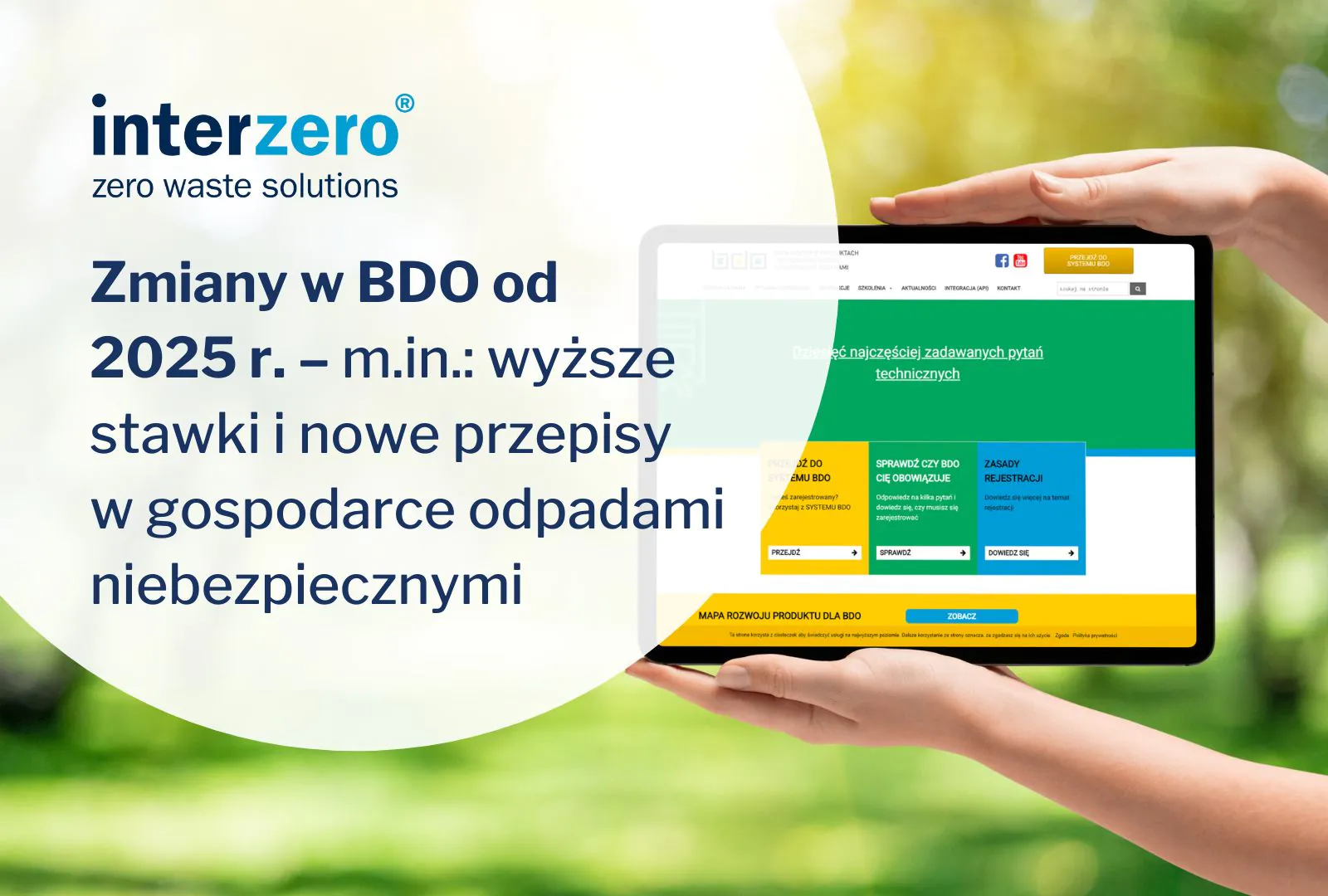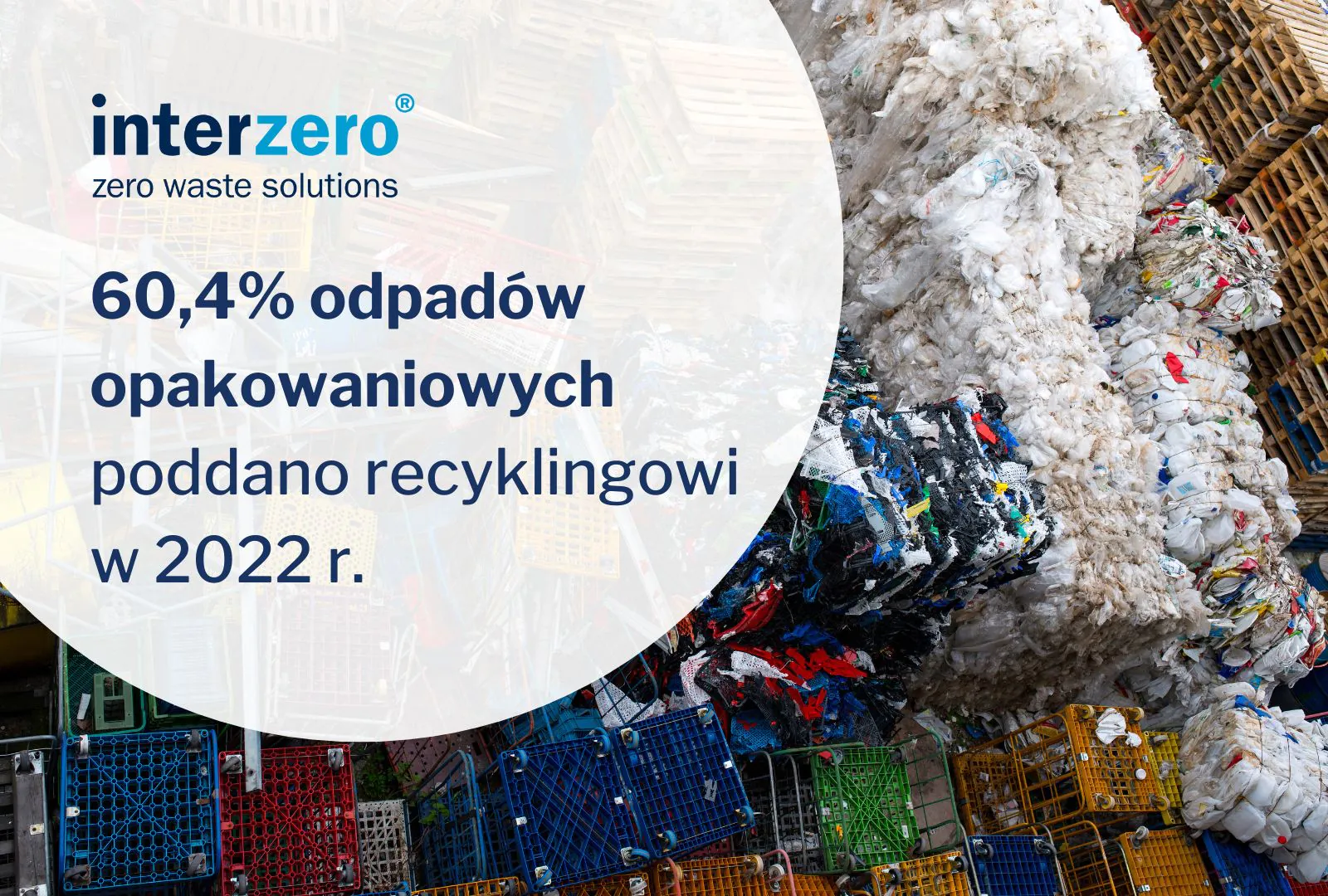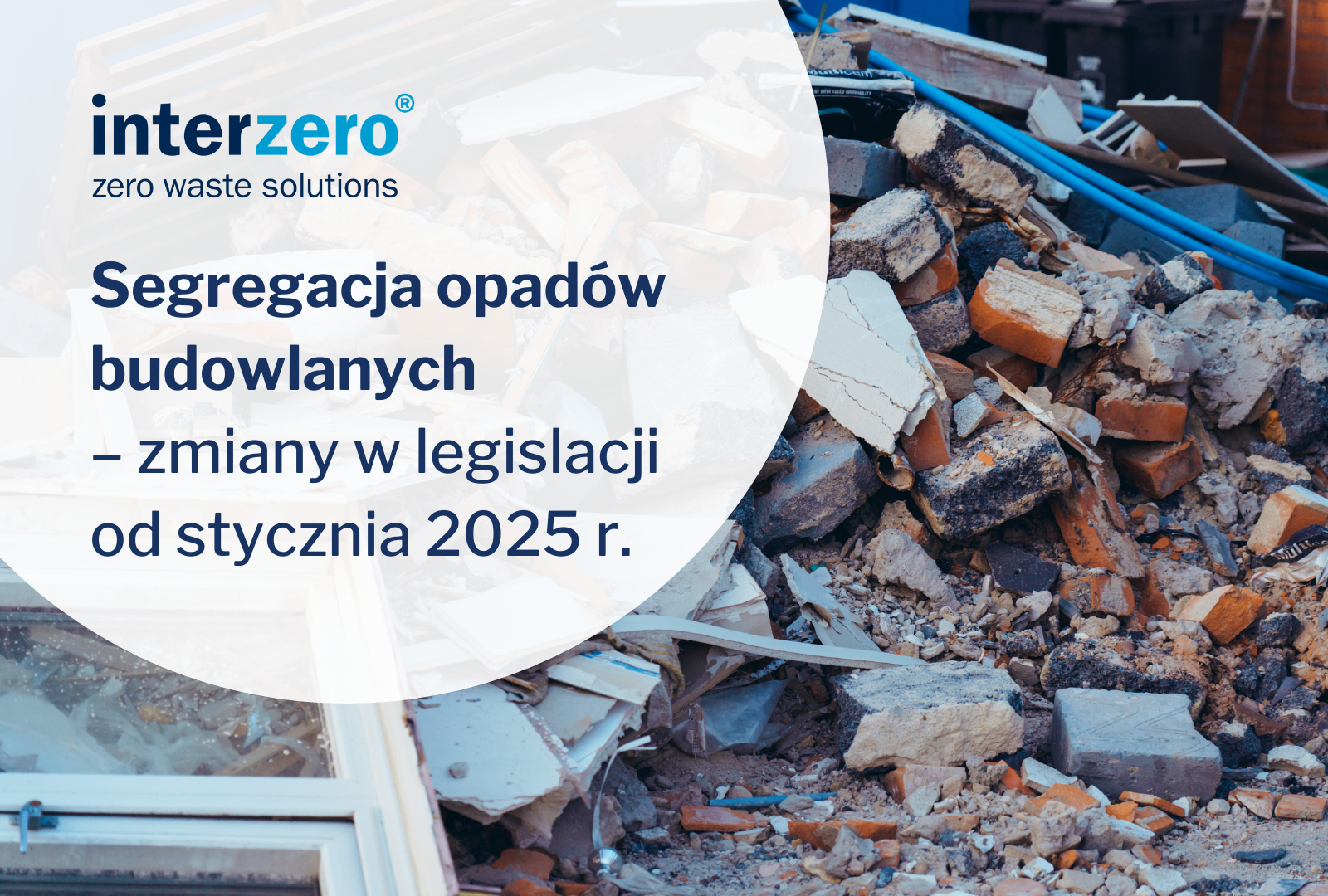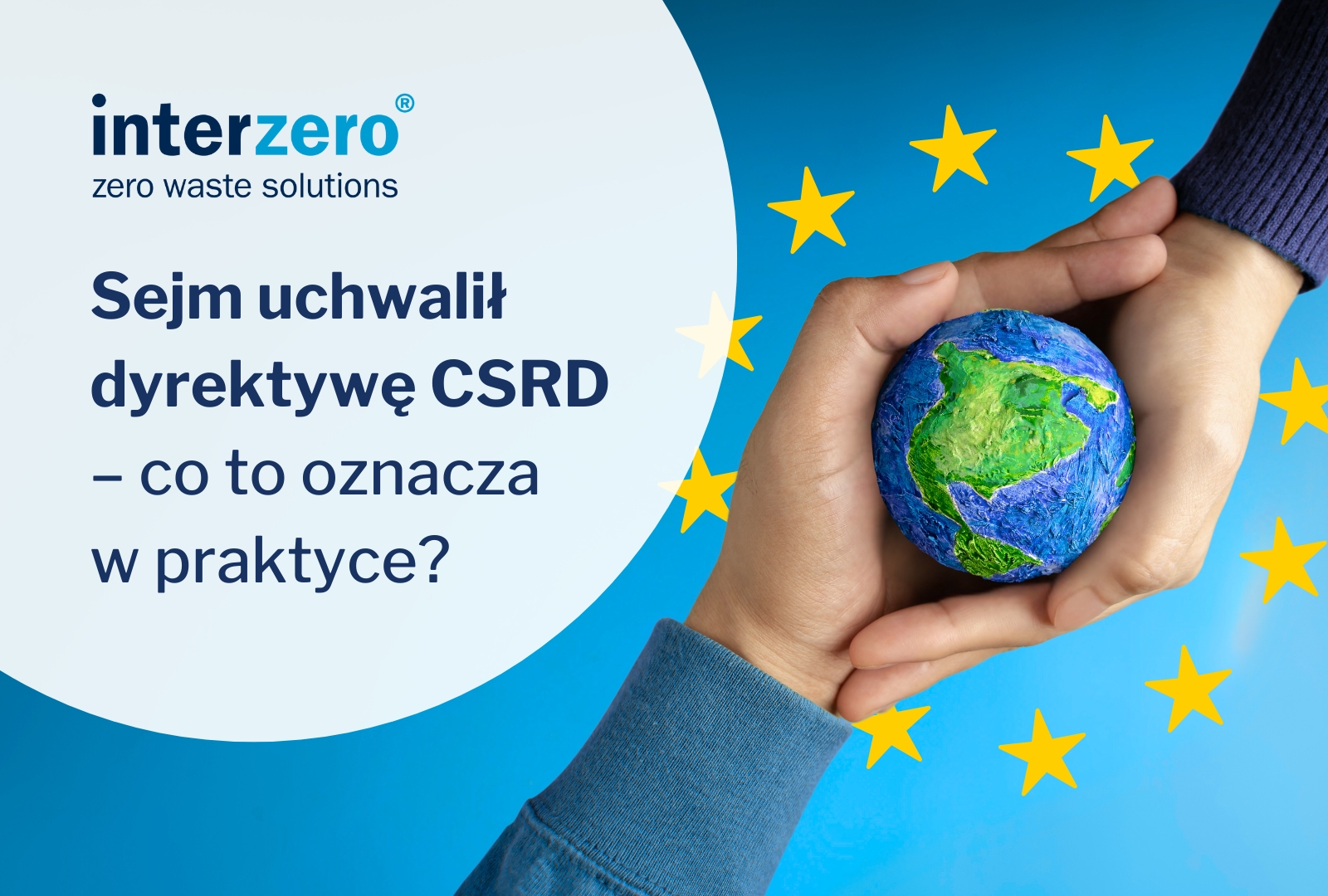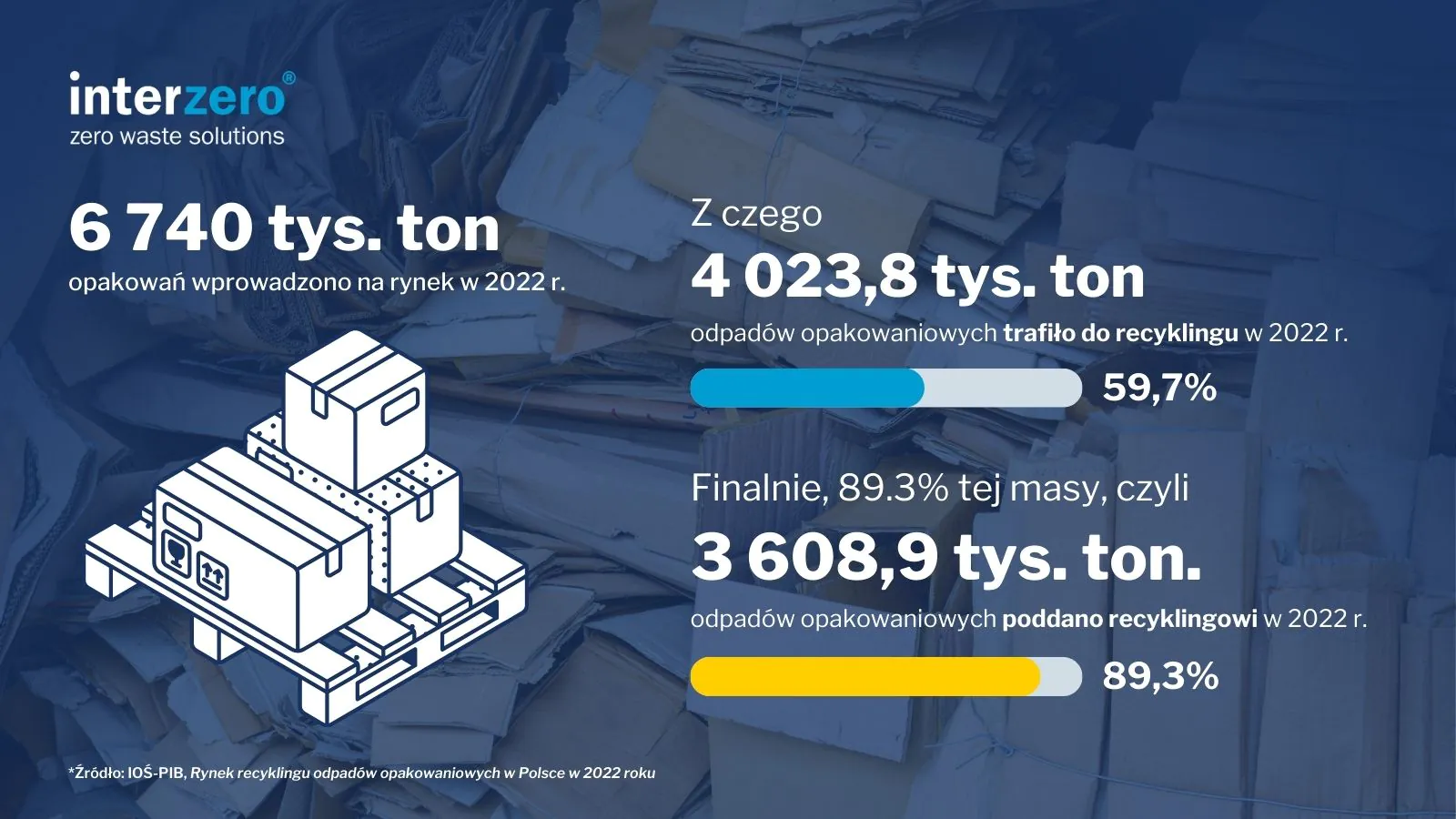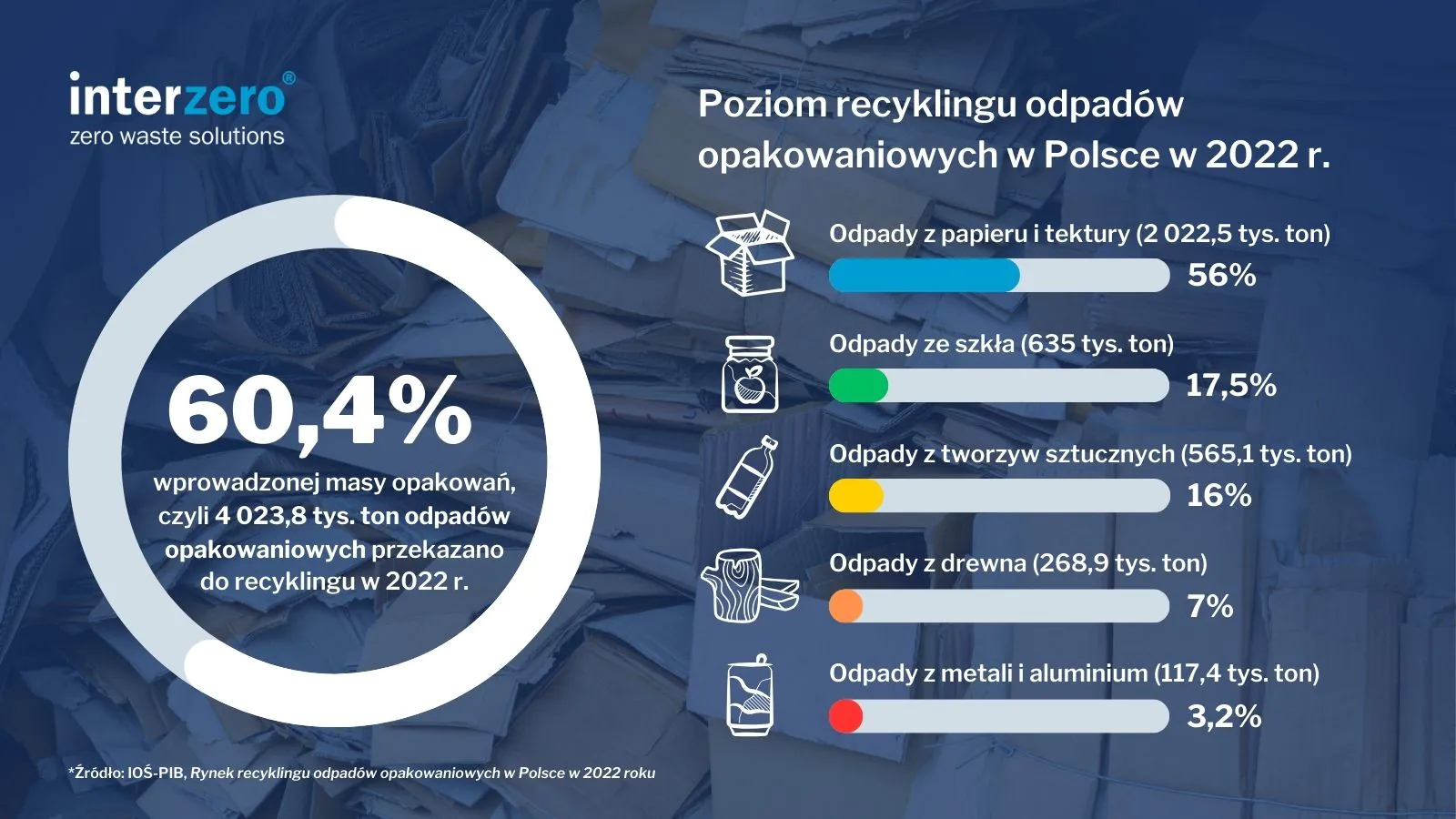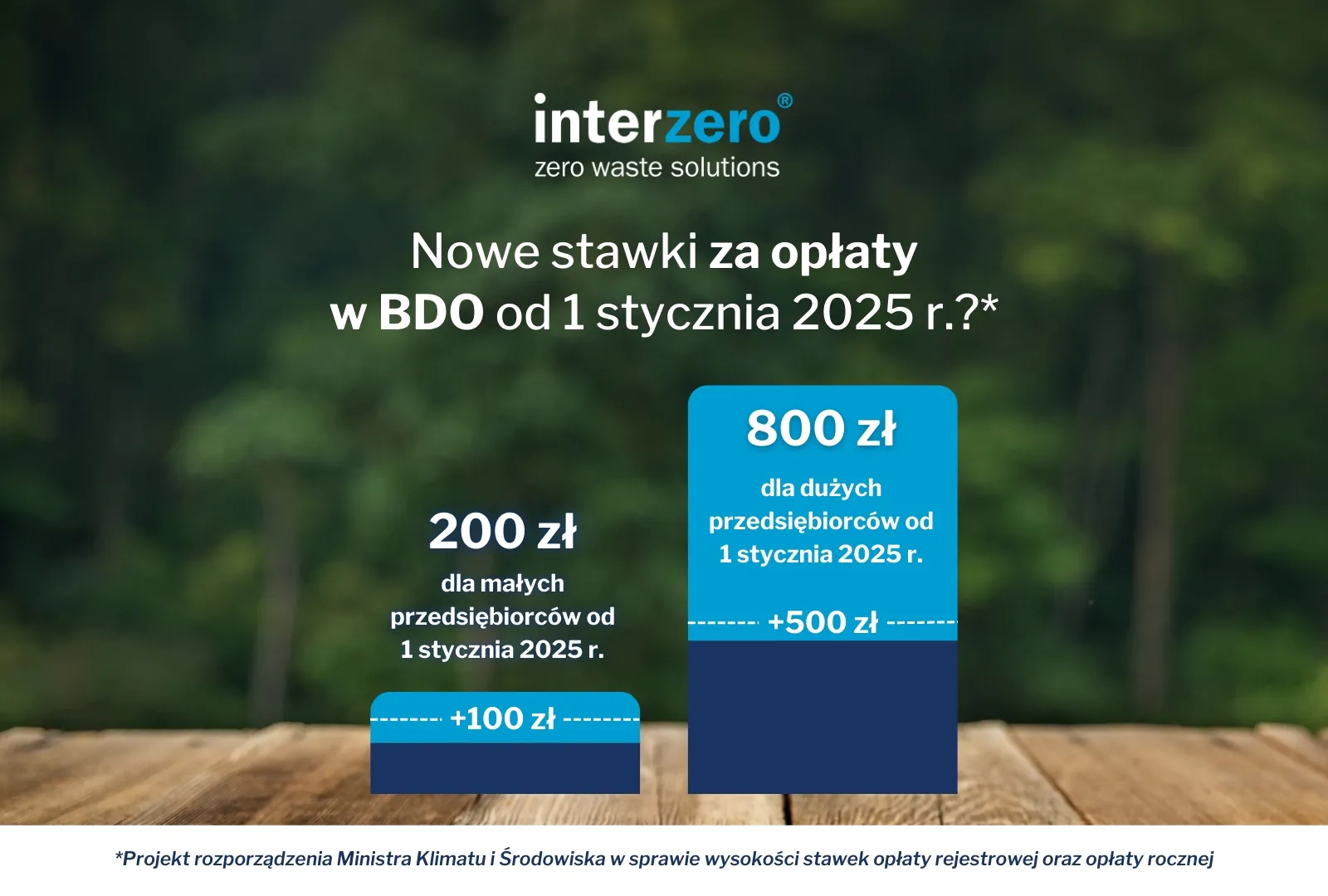Hairdressing and beauty salons must register with the BDO
With the new year, a new regulation came into force (Journal of Laws 2024, item 1644), in which 5 hazardous waste codes were removed from the list of waste codes exempt from the register, including 2 strictly related to the beauty industry. Unfortunately, the current exemption, which was eagerly used by entities generating small amounts of hazardous waste, will disappear. How to prepare for new obligations related to environmental protection?
Registration in BDO of hairdressing and beauty salons - Interzero support
Registration with BDO is a change for tens of thousands of hairdressers, beauticians and other service providers from the beauty industry who have so far produced< 200 kg/year of waste with code 15 01 10*. The BDO system is the Database on Products and Packaging and on Waste Management - a system that allows for electronic implementation of registration, record-keeping and reporting obligations in Poland. Are you not sure whether your business also has to register with BDO? Or maybe you do not want to deal with it and prefer that specialists take over the matter? On the BDO registration page for beauticians and hairdressers you will find a form - you can contact experts from our company who will take over this obligation. We act quickly because we have been doing it for years - and you gain valuable time that can be devoted to other areas of running a business. If you need more information about the BDO system, watch our free webinar about BDO .
Penalties for not registering with the BDO for beauticians and hairdressers - protect your business
Do you value your hard-earned money? This is another reason to make sure you are registered in the BDO. Let's start with the mildest penalty - that for not filing a BDO report. If an entity required to prepare an annual report on waste generated and waste management fails to file this report, it is subject to a fine - from PLN 20 to PLN 5,000. The penalty for not filing a BDO entry, on the other hand, ranges from PLN 5,000 to PLN 1,000,000. However, these are not the only concerns of entrepreneurs. Managing waste in a manner inconsistent with the information contained in the entry in the register is punishable by arrest or a fine - as is filing an application inconsistent with the actual state of affairs. It is also worth knowing what types of waste there are and which of them are generated by our company. Mixing hazardous waste of different types or mixing hazardous waste with non-hazardous waste is punishable by an administrative fine from PLN 5,000 to PLN 1,000,000.
Hazardous waste from beauty salons, hairdressers and the beauty industry - types and examples
This waste poses a particular threat to human and animal health and the natural environment. Their disposal may only take place in specially adapted plants and under restrictive control. Code 15 01 10* is packaging containing residues of hazardous substances or contaminated with them. Specific examples? Cans of paints, oxidants, brighteners, packaging of acetones, cleaners, packaging of products containing high concentrations of acids, or packaging of adhesives.
Are you looking for a company that will guide your business through the BDO entry? Fill out a simple form for beauty salons, hairdressers and the entire beauty industry - we will contact you!
New product fee rates for glass packaging - significant reductions from 2025
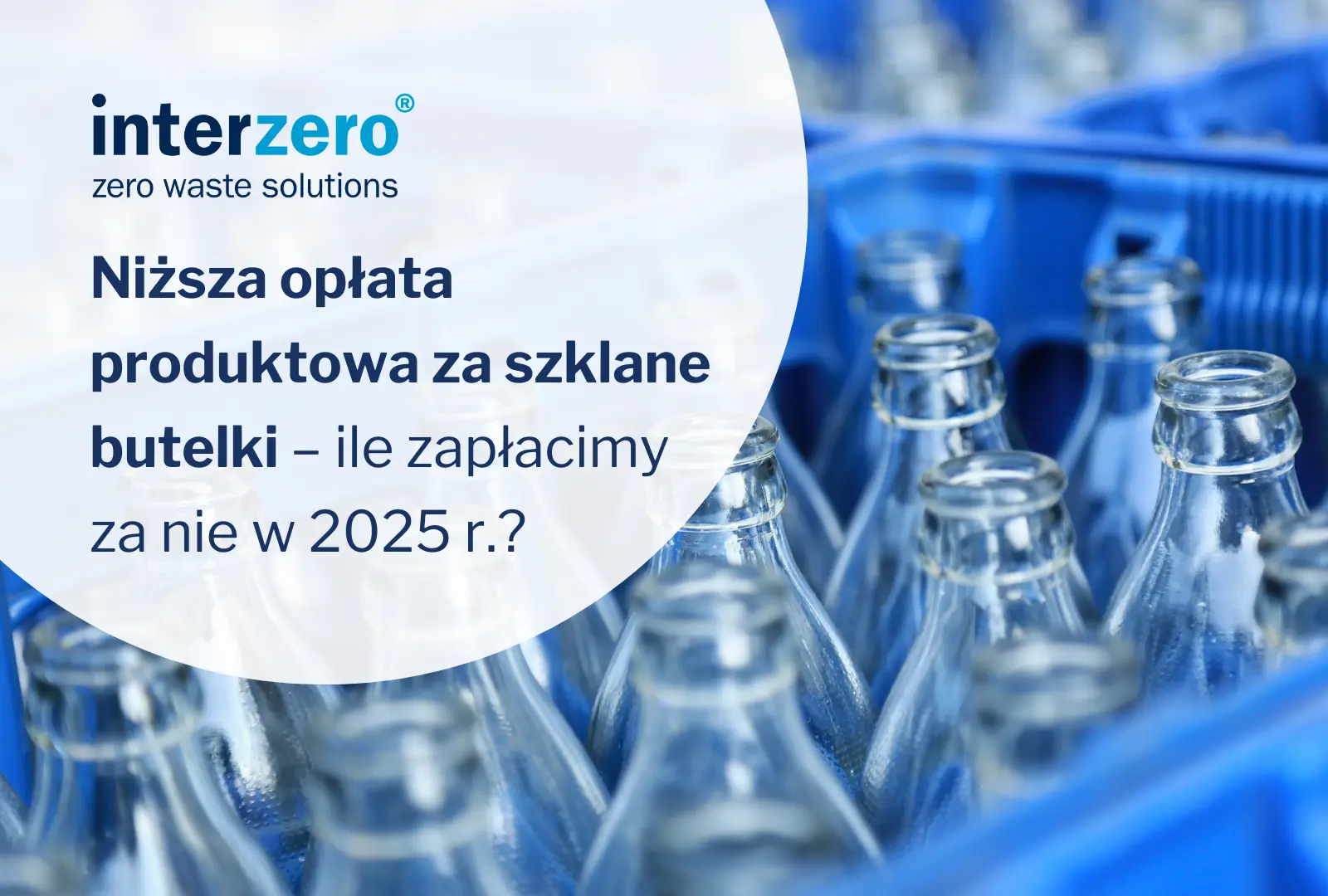
New product fee rates for glass packaging - significant reductions from 2025
Glass bottles collected under the deposit system will be subject to a lower product fee than assumed. The new product fee rates result from the regulation of the Minister of Climate and Environment, which came into force at the beginning of 2025.
Lower product fee for glass bottles covered by the deposit system
On January 1, 2025, an amendment to the regulation of the Minister of Climate and Environment came into force, which significantly reduced the product fee rates for glass packaging collected under the deposit system. According to the new regulations, for each kilogram of reusable glass bottles, those introducing them will pay :
- PLN 0.01 (instead of PLN 0.10) in 2025,
- PLN 0.05 (instead of PLN 1) in 2026,
- PLN 0.25 (instead of PLN 5) in 2027 and subsequent years.
Let us recall that the previous regulations provided for uniform rates for all types of packaging covered by the deposit system. So what is the reason for this change?
Reduction of the product fee due to the higher weight of glass packaging
The amendment to the regulation was intended to make the product fee rates more realistic . As emphasized in the justification for the draft of the new regulation, the weight of a glass bottle is many times higher than the weight of a PET bottle or a can of identical capacity. Based on the data cited by the Ministry of Climate and Environment, the weights of half-liter packages covered by the deposit system are as follows:
- PET bottle - 13 g,
- drinks can - 14 g,
- glass bottle - 315 g.
This means that per 1 kilogram of packaging there are:
- 77 PET bottles,
- 71 cans,
- only 3 glass bottles.
In line with the principle that it is the number of packages that litters, not their weight , the product fee rates for glass packaging have been significantly reduced.
Discover Interzero's comprehensive services for deposit system participants >>
Environmental justification for reducing the product fee for glass packaging
The reduction of the product fee for glass packaging was dictated not only by economic issues, but also by ecological ones. The use of reusable packaging has a positive impact on the environment and brings us closer to the realisation of the idea of circular economy . The use of returnable glass bottles reduces the scale of production of new bottles, and thus reduces carbon dioxide emissions, electricity consumption and raw materials .
Maintaining the current, uniform product fee rates for all these types of packaging could cause those introducing them to abandon their use and replace "expensive" reusable glass with much "cheaper" single-use plastics. Giving up reusable glass bottles would be a step backwards, moving us further away from the transition to a circular economy.
See also:
- 9 months delay in the deposit system. What does this mean for the packaging industry?
- Sielaff Bottle Machines - the best machines for the deposit system
Sources:
- Regulation of the Minister of Climate and Environment of 24 December 2024 amending the regulation on product fee rates for individual types of packaging, https://isap.sejm.gov.pl/isap.nsf/download.xsp/WDU20240001960/O/D20241960.pdf.
- https://legislacja.rcl.gov.pl/projekt/12389300/katalog/13079739#13079739
From 2025 obligation to selectively collect textile waste. Where to throw away old clothes and shoes?

From 2025 obligation to selectively collect textile waste. Where to throw away old clothes and shoes?
From 1 January 2025, textile waste can no longer be disposed of as mixed waste. At the beginning of the year, an amendment to the Act on Maintaining Cleanliness and Order in Municipalities and certain other acts came into force, which obliges all municipalities to conduct selective collection of textile waste.
Selective collection of textile waste on the shoulders of municipalities
According to the provisions of the amendment, from 1 January 2025, each commune is obliged to organise selective collection of textile waste , which includes, among others, used clothing and footwear, home textiles (bedding, curtains) and other fabric products. The minimum that local governments must ensure is the possibility of returning all textile waste to the local PSZOK .
Currently, there are no plans to introduce an additional, sixth container exclusively for textile waste or to oblige municipalities to collect this fraction of waste from properties. However, municipalities have the freedom to organise additional methods of collecting textile waste e.g. collecting it directly from households or creating additional collection points. Częstochowa has recently been testing a similar solution, which allows its residents to return textile waste free of charge after prior telephone appointment.
Textile waste under the EU's microscope
The introduction of the obligation to selectively collect textile waste results from the transposition into Polish law of the provisions of Directive 2008/98/EC of the European Parliament and of the Council of 19 November 2008 on waste and repealing certain Directives. Article 11 paragraph 1 of the Directive obliges all EU Member States to conduct selective collection of at least the following fractions: paper, metal, plastics, glass and textiles. This last fraction is mandatory collected throughout the EU from 1 January 2025.
Let us recall that the European Union is still working on implementing legislation to increase the effectiveness of textile waste collection and impose additional obligations on textile producers, known as the extended producer responsibility system. Under the provisions of the EPR, those introducing textiles are to be charged with the costs related to the collection, segregation and recycling of waste generated from them.
Penalties for incorrect segregation of textile waste
Selective collection of textile waste means new obligations not only for municipalities, but also for their residents. From the new year , it is forbidden to throw textiles into the mixed waste bin . Fines for failure to comply with the new rules or for incorrect waste sorting can range from 200 to 400% of the basic waste collection fee. It should be emphasised that these penalties are not one-off - if residents of the property continue to fail to comply with the statutory obligations, financial penalties may also be charged in the following months.
The mechanism for calculating such punitive fees is already well known to us - similar consequences will also be faced by us for incorrect sorting of other waste fractions for which there is an obligation to selectively collect (glass, metal and plastics, paper, bio-waste). Why are we reminding you of this? Well, the study we conducted in 2023 showed that only 62% of Poles segregate waste into all the required fractions, and even fewer, 43%, declare that they can do it correctly. You will find more conclusions in the report from the research We are getting into trouble .
Where to throw away old clothes and shoes?
Contrary to appearances, since January we are not obliged to return all used textiles to PSZOK. Used textiles in good condition can be donated to charities (e.g. PCK, Caritas, single mothers' homes, homeless shelters) or thrown into a used clothing container .
Textile manufacturers also offer alternative collection points for textiles , giving consumers the opportunity to return old clothes or shoes to their stores. In most cases, these can be products of any brand, which will then be recycled, upcycled or reintroduced to second-hand stores.
As representatives of the waste and recycling industry, we strongly encourage you to act in the spirit of our idea Together for a World Without Waste, which involves not only proper handling of textile waste, but also preventing its generation. How to do it? Discover 5 ways for ecological fashion and a sustainable wardrobe .
Changes in BDO - new regulations for 2025

Changes in BDO - new regulations for 2025
From January 2025, important changes to waste management rules and the functioning of the BDO system will come into force. Their goal is to increase control over waste management, further increase the levels and effectiveness of recycling, and protect the environment. See what will change in BDO in 2025 and check if the new regulations will also apply to your company!
BDO fees up in 2025 - 100% and 166% increase
The change that will affect all entrepreneurs entered in the BDO register is the increase in the annual and registration fee . It is dictated by, among other things, the growing costs of maintaining, running and developing BDO.
From 2025 BDO fee rates will be:
- PLN 200 for micro-entrepreneurs (increase from PLN 100),
- PLN 800 for other entrepreneurs (increase from PLN 300).
Let us remind you that the deadline for paying the annual fee for a given calendar year expires at the end of February - in 2025 it will be February 28. The annual fee must be paid in the new amount by that date.

New regulations for hazardous waste management in 2025
From 2025 an obligation to keep records of all hazardous waste generated by entrepreneurs will be introduced. This means that the previously applicable exemptions will disappear , which were eagerly used by entities generating small amounts of hazardous waste, including beauticians and hairdressers. Entrepreneurs running beauty and hairdressing salons can order registration in BDO Interzero - quickly, conveniently and 100% online.
You can read more about the new obligations of the beauty industry in the article: Beauty and hairdressing salons with the obligation to register with the BDO>>.
The obligation to record will cover hazardous waste with the following codes:
- 3 02 08* Other engine, gear and lubricating oils,
- 15 01 10* Packaging containing residues of or contaminated with hazardous substances,
- ex 15 01 11* Metal packaging containing hazardous porous reinforcements other than those of asbestos, including empty pressure containers,
- 16 02 13* Discarded equipment containing hazardous components other than those mentioned in 16 02 09 to 16 02 12,
- 16 06 03* Batteries containing mercury.
Do you produce such hazardous waste? Check if you need to register your company with BDO in 2025!
Further changes to the obligation to segregate construction and demolition waste in 2025
From January 2025, the obligation to segregate construction and demolition waste into 6 fractions will come into force . The latest change, however, is the departure from the requirement to ensure segregation of R&D waste at the place of its generation - . the entrepreneur will be able to transfer the obligation to segregate it to another entity with appropriate permits and entries in the BDO, provided that an appropriate agreement is signed.
In the previous version of the regulations, the legislator obliged every producer of construction and demolition waste to segregate it at source. As a result of the amendment to the Waste Act, the possibility of segregating waste outside the place of its generation was introduced, but it did not release the entrepreneur from the responsibility for ensuring the implementation of this obligation.
Learn about the new rules for managing construction and demolition waste in 2025.
Postponement of the launch of the confirmation module in BDO
In 2025. it will not be possible to issue DPR and EDPR documents in the BDO system . The introduction of the Confirmation Module, which was to enable the digital generation of these documents, has been postponed until 1 January 2027. From that date, entrepreneurs will be able to electronically issue DPRs and EDPRs for packaging and products, as well as certificates for electrical and electronic equipment and batteries and accumulators.
In 2025-2026, recycling confirmation documents will continue to be issued in paper form .
Increase in financial outlays for BDO in 2025-2034
From 2025, the limits for spending funds from the National Fund for Environmental Protection and Water Management for purposes related to the operation of BDO will be raised . This is to ensure further, trouble-free access to BDO, as well as to maintain the current level of cybersecurity and finance the development of the system.
Moreover, revenues from registration fees and annual fees for entry in the BDO will be a direct income of the National Fund for Environmental Protection and Water Management.
Independent movers did not meet annual packaging waste recycling targets in 2022.

Independent movers did not meet annual packaging waste recycling targets in 2022.
Only 8% of independent introducers achieved the minimum statutory recycling levels in 2022 - according to the IOŚ-PIB report Packaging and packaging waste management in Poland in 2022. In the same period, recovery organisations achieved or even exceeded the annual recycling levels for all types of packaging waste.
Only 8% of independent introducers fulfilled the recycling obligation
Among the introducers who chose to independently ensure the recycling of packaging waste they generated, as many as 11,234 entities were required to achieve the required recycling levels , which in 2022 were:
- 30% for plastic waste,
- 51% for aluminium waste,
- 55% for ferrous metal waste,
- 66% for paper and cardboard waste,
- 62% for glass waste,
- 19% for wood waste,
- 59% for all above types of packaging waste combined.
Based on data from the BDO register, EIA-PIB experts calculated that only 8% of independent introducers achieved the minimum levels mentioned . The percentage of independent introducers who managed to meet the statutory minimum is shown in the graph below:
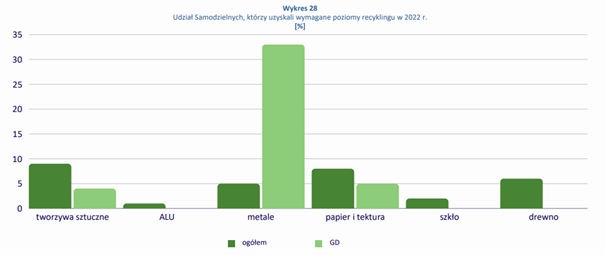
Source: Report on Packaging and Packaging Waste Management in Poland in 2022
At the opposite pole are recovery organisations that in 2022 achieved the statutory recycling levels for packaging waste made of metal, glass, paper and cardboard and exceeded the required recovery level for plastic packaging waste [and] .
Cooperation with a recovery organization is a chance to fulfill the obligation and avoid the product fee
Failure by the entrepreneur to achieve the statutory levels of packaging waste recycling results in the necessity to calculate and pay a product fee, which is a kind of environmental tax. In order to avoid the obligation to pay the fee, the entrepreneur can transfer to the recovery organisation its obligation to recycle packaging waste generated from the packaging and products in packaging introduced by it. Thanks to this, the introducer pays only a fixed, low amount under the contract with the recovery organization and does not have to bother with ensuring waste recycling.
Pass on your recycling responsibility to the Interzero Recovery Organisation
Interzero takes over recycling obligations from entrepreneurs in the scope of:
- packaging waste,
- batteries and accumulators,
- post-consumer products: tires, oils and lubricants,
- electrical and electronic equipment.
Thanks to this, every entrepreneur can comprehensively transfer to us all of their obligations resulting from introducing packaging and products to the market. Check what obligations your company is subject to!
By signing one contract you will gain certainty that your company will meet its obligations to ensure statutory levels of recovery, recycling and preparation for reuse.
[1] Packaging and packaging waste management in Poland in 2022, https://ios.edu.pl/wp-content/uploads/2024/09/gospodarka-opakowaniami-i-odpadami-opakowaniowymi-w-polsce-w-2022-r-2.pdf
Where to return food after the holidays? Christmas zero waste solutions

Where to return food after the holidays? Christmas zero waste solutions
Holidays, holidays and after the holidays, and the fridge is still full? Excess food: bought, prepared and then thrown away is almost a permanent element of every celebration and family gathering. Where to give away food after the holidays so that wasting it does not become a new, not very ecological tradition?
How not to waste food? Learn about food sharing
Every year in Poland, around 4.5 million tons of food is wasted, and 60% of that in households. Why? The most common reasons for throwing away food, as declared by respondents, are:
- expiry date - 60%,
- too much shopping - 26%,
- improper storage - 26%,
- purchase of unpalatable products - 25%,
- purchase of poor quality products - 17%,
- too large portions of meals - 18%,
- lack of ideas on how to use the products - 10% [i] .
The amount of food thrown away increases dramatically during the Christmas and New Year period . It is estimated that 83% of people throw away food during this time. December 24 has even been unofficially declared Christmas Food Waste Day - in Poland alone, as much as 9.2 thousand tons of food end up in the bins. [ii].! Can this be remedied?
For environmental reasons, we encourage moderation above all, which is one of the most important ingredients in our recipe for holiday peace . However, we assume that since you have arrived here, you are struggling with the problem of managing food after the holidays and are looking for a solution that is best for you and nature.
The remedy to most of these problems is food sharing . This movement encourages people to give away excess food to people who will gladly accept it and literally save it from going to waste . There is only one condition - the food must still be edible.
Where to drop off food after the holidays? Map of food pantries in Warsaw and throughout Poland
One way to do holiday food sharing is to use canteens, also known as community fridges. Canteens are publicly accessible fridges, cabinets, and sometimes small rooms that allow for the exchange of food . You can not only leave fresh products or dishes there, but also take what others have left on the shelves.
What should be donated to the soup kitchen? Only food that we would eat ourselves. Importantly, it may be past its expiration date - dry and loose products, preserves, spices, and sometimes even properly stored dairy products are often good for consumption after the date indicated on the packaging. However, when giving food to a canteen, it is worth following a few rules :
- products should be placed in clean packaging and tightly closed,
- Homemade dishes should be labelled with their ingredients and preparation date,
- you can leave previously opened products, but you should indicate the date of opening (especially in the case of food that spoils quickly),
- If a dish requires storage at a low temperature, it should definitely be placed in the fridge!
Contrary to appearances, eateries are not the domain of big cities - you can find them in small towns too!
See the nationwide map of canteens
Go to the map of Warsaw's food places
Don't see your location here? Try searching for it, for example, in an internet search engine - the network of eateries is constantly growing, so there may be locations in your area that have not yet been marked on the map.
List of places where you can donate food after holidays, events and every day
Food drives are not the only places where you can donate food after the holidays (and not only after the holidays). See where else you can share food!
- Food Banks
These are charitable institutions that accept any type of food and then distribute it to those in need. All food products (including perishable products, such as bread, dairy, meat, fruit and vegetables) can be donated to such a bank at least 2 days before their expiration date. There are 31 such banks in Poland. See the map of Food Banks .
- Facebook groups and local forums
Food sharing is also possible through social media and local groups, which you can find under the names:
- online food hall, foodsharing, freeganism,
- I will give it back, watch out, the garbage truck is coming (or simply: the garbage truck),
- we don't waste food.
- Caritas Poland Branches
Caritas has long been actively working to help those in need, while also preventing food waste. Local Caritas branches often accept unnecessary food that has been sitting in the fridge, for example after the holidays or an event. It is worth contacting the nearest Caritas branch and donating food to them, which will then be given to those in need.
- Facilities for people in homelessness crisis
Surplus food from the holidays is also readily accepted by shelters and shelters for people in homelessness crisis. A list of all such facilities, divided by province, can be found on the website of the Ministry of Family, Labor and Social Policy .
And when you do have to throw away... How not to waste food that ends up in the trash?
Sometimes food has to be thrown away - it is spoiled, over-salted, burnt, there may be many reasons. However, it is worth doing it wisely. Properly sorted waste from the table, fridge or kitchen cupboard can still be recycled organically, i.e. composted or fermented.
Where to throw away food? Most food goes into the brown bin for bio-waste . This is where unnecessary, spoiled or expired food should go, but with some exceptions. Leftover meat, cold cuts and bones are mixed waste as are eggs, cheese and other animal products. Mixed dishes containing animal products, such as salads or sauces, are not bio-waste either. Check what we throw away and what we do not throw away into bio-waste .
An alternative to a bio-waste bag is a composter: home, kitchen or electric. It allows you to turn bio-waste into a natural and completely free fertilizer for plants, which can be created in just 24 hours! Such possibilities are provided by the Oklin composter from the Smart line .
[i] Zero recycling point in Poland , https://portalkomunalny.pl/wp-content/uploads/2024/12/raport-punkt-zero-recyklingu-w-polsce.pdf
[ii]. Holidays, holidays and... to the trash. We throw away 1.6 kg of holiday food per person , https://www.rp.pl/przemysl-spozywczy/art41538111-swieta-swieta-i-do-kosza-wyrzutmy-1-6-kg-swiateczny-jeczenia-na-osobe
Construction waste segregation - changes from January 2025

From January, changes in the way construction and demolition waste is segregated
From 2025 segregation of construction and demolition waste at the place of its generation will not be mandatory. The abolition of the obligation to segregate at source (which has not even entered into force yet) is provided for in the draft amendment to the Waste Act, which the Council of Ministers adopted during the session of 29 October 2024.
Abolition of the obligation to separate construction and demolition waste at source
The most important provisions of the amendment are the abolition of the obligation to segregate , i.e. selective collection of construction and demolition waste at the place of its generation, and the definition of responsibility for the segregation of waste fractions.
Every entrepreneur generating construction and demolition waste will be obliged to separate at least 6 fractions at the place of generation:
- wood waste,
- metal waste,
- glass waste,
- plastic waste,
- waste slice,
- mineral waste, including concrete, bricks, tiles, ceramics and stones.
The draft amendment to the Waste Act was created in response to interpretation doubts and potential problems with the organisation and costs of selective collection reported by representatives of the construction industry. The previous version of the regulations, which were to enter into force on January 1, 2025, did not clearly state who is responsible for selective collection and collection of construction and demolition waste. The need to sort them into 6 fractions at the place of generation would also cause a sharp increase in the costs of removing such waste, which in turn could contribute to their illegal storage and disposal directly into the environment .
The waste producer will be able to order segregation
According to the provisions of the act amending the act on waste, an entrepreneur generating construction and demolition waste will be able to transfer it to another authorized entity, which will take over the obligation to separate it into at least 6 fractions outside the place of generation. Importantly, transferring waste to another entity does not completely release the producer of construction and demolition waste from the responsibility for fulfilling the obligation to separate it. If this obligation is not fulfilled due to the fault of the entity that took over the waste, both entities (the producer and the recipient) will be jointly and severally liable for it.
The new regulations are to enter into force on 1 January 2025.
Handling construction and demolition waste according to the hierarchy
In the justification for the draft act, its authors stressed the need for entrepreneurs to comply with the so-called waste management hierarchy:
entities providing services in the field of construction, demolition, renovation of facilities (construction contractors) are obliged to prevent waste generation. [i]
First of all, it is necessary to take action to prevent the generation of construction and demolition waste. Selective waste collection should only take place when the materials are no longer suitable for reuse . The segregation itself is to ensure suitability for preparation for reuse, recycling and other recovery. Regardless of the place of sorting (at the place of generation or outside the place of generation), individual fractions of construction and demolition waste should then be transferred to specialist entities that will take care of their further management. For this purpose, it is often necessary to order professional collection of construction and demolition waste from a specified address offered by, among others, a waste collection company such as Interzero.
[i] https://orka.sejm.gov.pl/Druki10ka.nsf/0/A065E318FFC3BE21C1258BC70041F23F/%24File/766-uzasadzenie.docx
Adoption of ESG reporting - see details
On November 21, the Sejm adopted an amendment to the act on reporting obligations in the field of sustainable development. The obligation to submit an ESG report for 2024 will cover over 3,000 companies in Poland. Already in 2026, regulations will cover small and medium-sized enterprises listed on regulated markets. Is Polish business ready for this?
What do the new regulations mean for Polish businesses?
The introduction of mandatory ESG reporting in Poland will have a significant impact on companies that meet the criteria set out in the EU CSRD directive. As in other European Union countries, these companies will be required to prepare annual sustainability reports . These reports will have to meet legal requirements and standards included in the EU regulation. ESG documentation will be formally equal to financial reports, and its content will have to be approved by independent auditors. Failure to comply with the obligation to prepare a report may involve serious consequences, including criminal liability.
What about companies that will not be subject to reporting obligations?
Companies that will not be directly subject to the ESG reporting obligation will also feel the effects of the adoption of the EU regulation. Why? We suspect that many of them will have to collect and analyse data on environmental impact anyway. These will probably be necessary documents for contractors or companies belonging to the same capital group, which will be subject to the reporting requirement. It is possible that partners will be required to support in providing appropriate data. That is why we encourage representatives of small and medium-sized enterprises to take an interest in the topic of ESG now. If they do not implement an appropriate operational strategy, the business may suffer seriously in a few years. Customers are also more willing to turn to products and services of transparent suppliers.
A Practical Guide to ESG for Every Business
The Interzero team, knowing that both small and larger companies will need expert help to implement ESG, has prepared an e-book for you. This is a document that contains all the necessary information. It is written in simple, accessible language. In it, we explain what the CSRD directive is, introduce a reporting schedule, show how to communicate on the topic of sustainable development, and present the operational steps that should be taken to prepare your business for ESG. Fill out the form on our website and you will get completely free access to it. Your education is one of the most important factors in the development of the company you run.
Summary and schedule
The news about the adoption of reporting is just the tip of the iceberg. We know how much the Polish business model will change now and we want our clients to be prepared for it. As a company, we believe in technology and innovation. That is why we want to guide all interested parties through the ESG topic smoothly and calmly. We remind you that reporting will be mandatory:
- from 2025 - for large enterprises (over 250 employees and/or EUR 50 million in turnover and/or EUR 25 million in total assets),
- from 2026 - for SMEs listed on the stock exchange.
Environmental Sustainability Dashboard - a tool for non-financial ESG reporting - our proprietary consulting solution. The tool will streamline data collection and monitoring processes - thanks to which you can precisely track ESG indicators. This is a solution for companies that want to be ready for mandatory reporting. Customers get access to an online platform and full advice on assessing the impact on the environment.
The recycling rate of packaging waste in 2022 was 60.4%
According to a report published by the Institute of Environmental Protection - National Research Institute, the level of packaging waste recycling was 60.4% in 2022. More than half of the recycled packaging waste (56%) was paper and cardboard waste. The highest recycling levels were also recorded for this fraction, amounting to 89.1% or 83.9%, depending on the methodology used.
Only and as much as 60.4% of packaging waste recycling
According to the calculations of IOŚ-PIB experts, in 2022, products packaged in 6,740 thousand tons of packaging were introduced to the market. Data from 532 installations were taken into account, which in 2022 received a total of 4,023.8 thousand tons of waste. Over 10% of this mass were so-called non-target materials (materials that are not processed in a given recycling process into products, materials or substances that are not waste). After correction, the total the mass of packaging waste recycled amounted to 3,608.9 thousand tons , including:
- 2,022.5 thousand tonnes of paper and cardboard packaging waste.
- 565.1 thousand tonnes of plastic packaging waste,
- 635 thousand tonnes of glass packaging waste,
- 268.9 thousand tonnes of wood packaging waste,
- 117.4 thousand tons of metal packaging waste.
According to the methodology adopted by the authors of the report, the recycling level of all packaging waste was 60.4%, which is 1.4% more than the minimum provided for in the Regulation of the Minister of Climate and Environment of December 19, 2021 on the annual recycling levels of packaging waste in individual years until 2030.
Recycling levels: achieved according to those introducing them, not achieved according to IOŚ-PIB
The recycling levels of all packaging waste were calculated in 2 variants. The first one was based on data from the introducers (entities that have entrusted statutory obligations to organisations) and independents (entities responsible on their own). These data show that the recycling levels of individual packaging waste for 2022 were as follows:
- metals - 93.9%,
- wood - 20.9%,
- plastics - 40.7%,
- glass - 65.3%,
- paper and cardboard - 89.1%.
Under this variant, the minimum annual recycling rates for packaging waste have been achieved for all types of packaging from which this waste originates.
The second variant of calculations presented in the report was based on the IOŚ-PIB methodology. The calculated recycling levels of almost all packaging waste (except plastics) are at a lower level:
- metals - 36.6%,
- wood - 16.7%,
- plastics - 45.8%,
- glass - 45%,
- paper and cardboard - 83.9%.
According to calculations based on the IOŚ-PIB methodology, in 2022 the entities introducing the waste did not achieve the minimum recycling levels for packaging waste made of ferrous metals and aluminium (amounting to 55% and 51%, respectively) and from wood (amounting to %).
Regardless of the variant , the lowest recycling rate was recorded for wood waste .
BDO register as a source of data for the IOŚ-PIB report
The source of the data presented in the report is the BDO register. The calculations do not include so-called free riders, i.e. producers or distributors who introduce plastic packaging or products in packaging into circulation and do not report them to the producer's responsibility organization or a public authority, or do not take financial or financial and organizational responsibility in any other way for the management of plastic packaging waste, or report smaller quantities than they actually introduce into circulation.
The analysis prepared by IOŚ-PIB takes into account waste with the following codes:
- 15 01 01 - paper and cardboard packaging,
- 15 01 02 - plastic packaging,
- 15 01 03 - wooden packaging,
- 15 01 04 - metal packaging,
- 15 01 05 - multi-material packaging,
- 15 01 06 - mixed packaging waste,
- 15 01 07 - glass packaging.
The actual amount of packaging waste generated in Poland and recycled was calculated as follows - by adding the mass of waste recycled in Poland and recycled abroad, and reducing the result by the mass of waste imported to Poland for recycling.
Source: [1]
From 2025 BDO fees will increase. How much will the annual fee and registration fee be?
From 2025 BDO fees will increase. How much will the annual fee and registration fee be?
The draft regulation of the Minister of Climate and Environment shows that there will be a significant increase in the annual and BDO registration fee as early as 2025. For micro-entrepreneurs, it will be an increase from PLN 100 to PLN 200, and for other entities - from PLN 300 to as much as PLN 800.
Increase in BDO registration and annual fees
On 24 October 2024, a draft regulation of the Ministry of Climate was published on the website of the Government Legislation Centre, which provides for an increase in the registration fee and annual fee rates applicable from 2018.
From 2025 they will amount to:
- PLN 200 for micro-entrepreneurs,
- PLN 800 for other entrepreneurs.
This means an increase of 100% and 166%, respectively. The increase will apply to all entities that have a statutory obligation to register with BDO.
Check if your company is required to register with BDO!
In accordance with the provisions of the Waste Act, BDO fee rates have been set at PLN 50 to PLN 2,000. Their amount should not be an obstacle to obtaining an entry in the register or conducting business activity , especially for micro-entrepreneurs and small and medium-sized enterprises.
The draft prepared by the Ministry of Climate and Environment was then submitted for review by, among others, employers' organisations and the Joint Government and Local Government Commission. Due to the need to ensure that the draft regulations enter into force on 1 January 2025, the deadline for reviewing the draft regulation was only 5 days.
In 10 years, medium and large enterprises will pay PLN 194.6 million, micro and small enterprises - PLN 70.9 million.
According to calculations by the Ministry of Climate, thanks to the increase in BDO fees , the total revenues from the registration and annual fees in 2025-2034 will amount to:
- for the state budget PLN 243.5 million,
- for the voivodeship budget (voivodeship marshals) PLN 134.8 million.
In the forecasted 10-year period, medium and large enterprises will have to incur additional costs in the amount of PLN 194.662 million, and micro and small enterprises in the amount of PLN 70.942 million.
Why will BDO fees increase?
The reasons for the increase in the registration and annual fees in BDO were explained in the justification for the draft regulation. As indicated by the Ministry of Climate, the fee rates have not been updated for over 6 years . During this period , the cumulative inflation amounted to 43.9% , which meant that the real revenues from the registration and annual fees actually decreased. Moreover, since 2018, there has been a significant increase in the costs associated with maintaining, running and developing BDO , which contributed to a decrease in the funds that can be allocated to the appropriate functioning of the Database on products and packaging and on waste management.
The proposed rates of the registration fee and annual BDO fee in the draft regulation take into account the aforementioned increase in costs both on the part of the province marshals and on the part of the state budget. Let us recall that the fees from entrepreneurs for entry and maintenance of the register are collected by the province marshal . They constitute 35.65% of the income of the province budget (province marshal), who is responsible for maintaining the register, and 64.35% of the income of the state budget and the Ministry of Climate and Environment, who are the BDO Administrator.
The legislative process can be followed on the website of the Government Legislation Centre .
Who is obliged to pay BDO fees?
The list of entities obliged to register with the BDO, and therefore to pay the annual and registration fees, is exhaustively specified in the Waste Act.
The following persons are required to pay the registration fee and the annual fee:
- equipment introducers and authorised representatives,
- introducing batteries or accumulators,
- introducing vehicles,
- manufacturers, importers and intra-Community purchasers of packaging,
- introducing products in packaging into the territory of the country,
- introducing tires into the territory of the country,
- introducing lubricating oils into the territory of the country.
Increased rates are not the only new thing at BDO
For some entrepreneurs, increased BDO rates are not the only concern. From 2025 the obligation to keep records of hazardous waste was introduced and at the same time the existing exemption used by entities generating small amounts of waste was abolished. These changes will primarily affect representatives of the beauty industry, including hairdressers, barbers, make-up artists, nail, eyelash and eyebrow stylists. More information at the link.
From 2025 an obligation to segregate construction and demolition waste into 6 fractions was also introduced. The most important change is the abandonment of the obligation to segregate R&D waste at the place of its generation - the entrepreneur can commission this to another authorized entity that has permits and an entry in the BDO, provided that an appropriate agreement is concluded. More information in the entry at the link.

